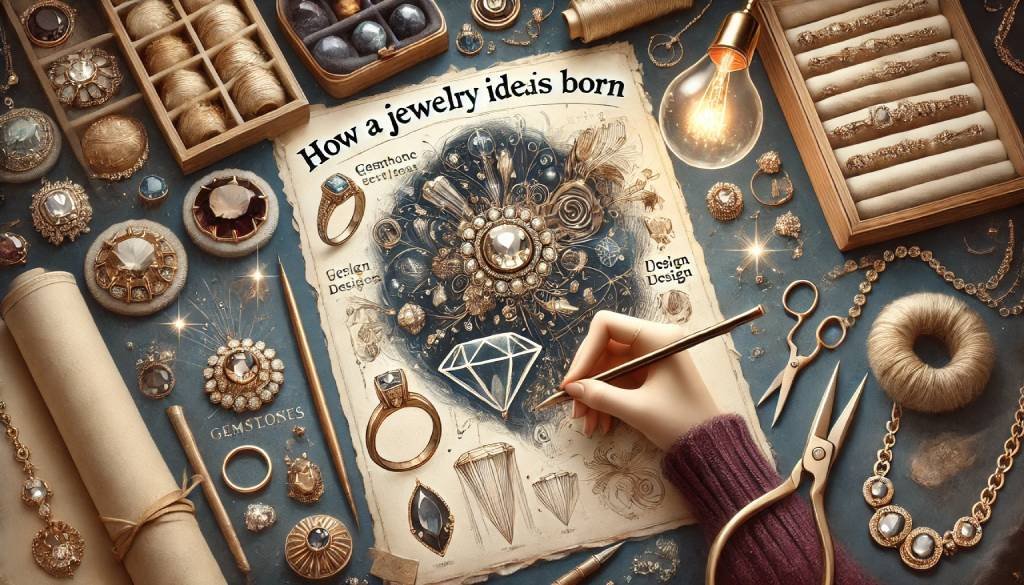Shaping Brilliance: How Marketing Transforms the Jewelry Industry
In the ever-evolving landscape of luxury goods, the jewelry industry stands as a shimmering example of tradition meeting innovation. While craftsmanship remains at the heart of the business, marketing has become an equally important facet of success. From digital storytelling to influencer campaigns, modern marketing strategies are reshaping the way jewelry is designed, sold, and perceived. Creating today San Francisco Bespoke Jewelry designers are not only artists but also storytellers, brand builders, and digital strategists.

Jewelry Marketing
The Role of Marketing in the Jewelry Industry
At its core, marketing is about creating desire. In the world of jewelry, it’s about elevating a piece beyond its material value and imbuing it with emotion, heritage, and aspiration. Marketing helps position a brand in a crowded marketplace, differentiate products, and connect with customers on a deeper level.
Whether through luxury branding, emotional storytelling, or digital innovation, marketing plays a critical role in every stage of a jewelry brand’s journey — from product creation to post-sale loyalty.
How Marketing Impacts Jewelry Designers
For a Jewelry designer, marketing is no longer optional — it’s essential. Even the most exquisite design can go unnoticed without the right exposure. Marketing provides the visibility and narrative that helps a designer’s work stand out.
Key ways marketing supports jewelry designers include:
- Building Brand Identity. Crafting a visual and emotional identity that resonates with a target audience.
- Generating Customer Loyalty. Encouraging repeat purchases through email campaigns, loyalty programs, and content.
- Increasing Visibility. Using SEO, social media, and advertising to reach new markets.
- Educating the Market. Explaining the value of custom pieces, gemstones, metals, and craftsmanship.
- Establishing Thought Leadership. Through blogs, interviews, and design storytelling, a Jewelry designer can build authority in the niche.
Key Marketing Channels Used in Jewelry
Modern jewelry brands and independent designers rely on an array of marketing platforms and tools. Each plays a strategic role in promoting luxury, exclusivity, or accessibility, depending on the brand positioning.
- Social Media. Instagram and Pinterest are vital for showcasing stunning visuals and building an emotional connection.
- Influencer Collaborations. Partnerships with fashion icons and celebrities increase credibility and visibility.
- Email Marketing. Offers, stories, and exclusive previews are powerful for building customer loyalty.
- Content Marketing & SEO. Blogs, videos, and guides help educate buyers while improving search engine rankings.
- E-commerce and Retargeting Ads. Help turn window shoppers into loyal customers through strategic product promotion.
Marketing Strategies That Resonate in Jewelry
Unlike fast fashion, jewelry often represents milestones, emotions, and legacy. Effective marketing in this sector must therefore appeal to both logic and sentiment.
Top strategies include:
- Storytelling – Sharing the inspiration behind each piece or collection.
- Sustainability Messaging – Highlighting ethical sourcing and craftsmanship.
- Customization & Personalization – Allowing buyers to take part in the creative process.
- Limited Editions & Scarcity – Creating urgency and exclusivity.
- Behind-the-Scenes Content – Offering a glimpse into the design and manufacturing process, especially valuable for Jewelry designers.
Challenges in Jewelry Marketing
While marketing offers vast opportunities, it also comes with challenges:
- Luxury Fatigue – Overexposure to marketing can make consumers numb to traditional luxury messaging.
- High Competition – With thousands of brands online, standing out is harder than ever.
- Trust & Authenticity – Consumers expect transparency about materials, prices, and sourcing.
To succeed, Jewelry designers must balance artistic expression with smart branding and consistent messaging.
The Future of Jewelry Marketing
As trends continue to shift, marketing will increasingly rely on technology and personalization. Augmented reality (AR) for virtual try-ons, AI-powered recommendation engines, and NFT integration are on the horizon for luxury jewelry.
Moreover, customer expectations will demand even more transparency and ethical behavior from brands, pushing Jewelry designers to not only market their products but also their values.
Conclusion
Marketing is no longer a support role in the jewelry industry — it’s a driving force. It empowers Jewelry designers to tell their stories, reach global audiences, and compete in a saturated marketplace. From Instagram campaigns to immersive brand experiences, marketing transforms fine jewelry into something unforgettable.
In a world full of sparkle, it’s not just the gem that shines — it’s the brand behind it.
